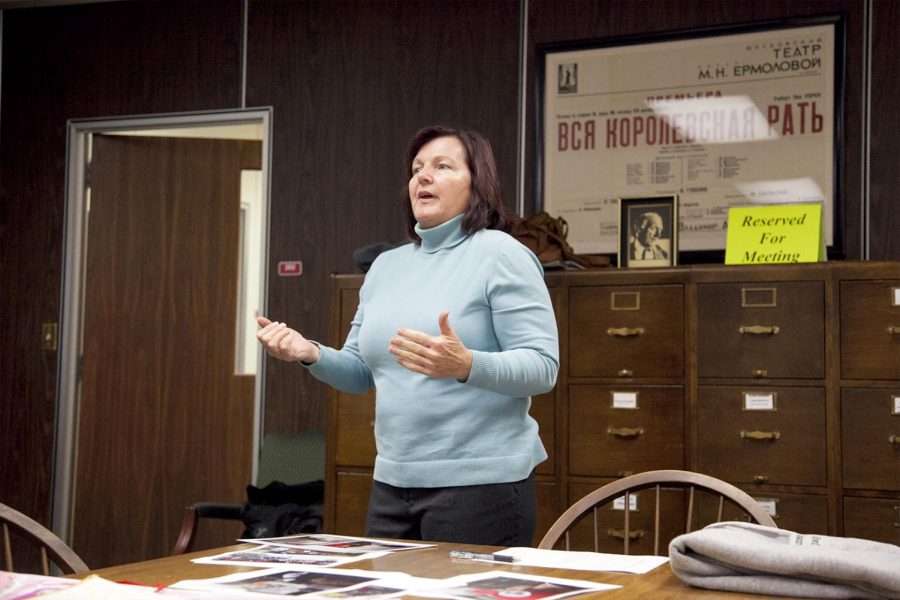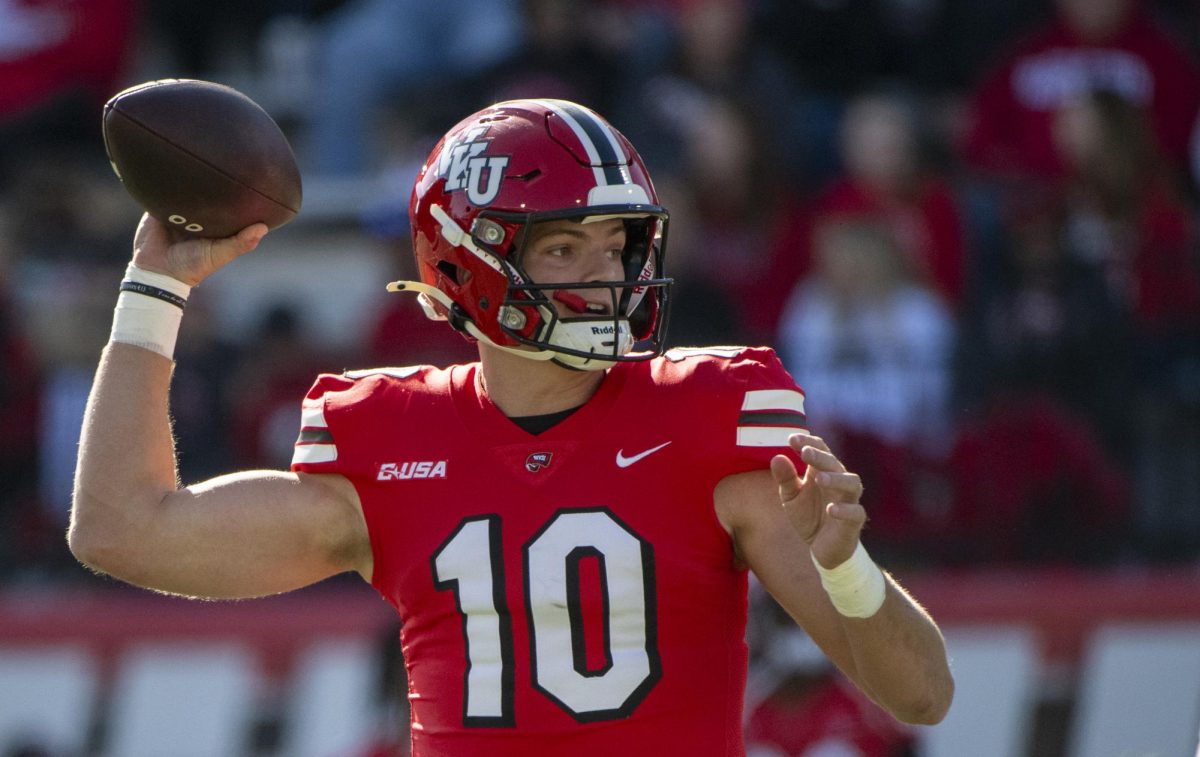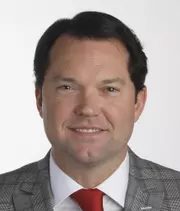Kentuckians record views on America
February 13, 2017
America’s timeline is filled with politically-charged history, from colonists who dumped tea into the Boston Harbor in protest of taxes, to the abolitionist movement during the Civil War, to the Civil Rights movement in the 1960s. More recently, Americans have rallied in political marches and protests to have an active voice in the national government in response to the election and other political developments.
Sandy Staebell, Kentucky Museum registrar and collections curator, and Sue Lynn McDaniel, special collections librarian, believe in the importance in preserving these events and the community’s active role in history, which is why they have begun collecting items for the Kentucky Museum’s America United/America Divided project.
“It’s been a long time since I’ve seen people feel so strongly about issues and being willing to get out there,” Staebell said. “I thought we needed to document that — all sides.”
Staebell and McDaniel said they hope to collect as much material as they can with Kentucky ties, whether it’s a button used or worn by a Kentuckian, a sign from a protest or anything else related to Kentucky’s role in the national political climate.
Staebell said the project is especially important in the way it captures this history as it’s being lived given the current way content may often be short-lived because of social media and digital platforms. The Kentucky Museum has long collected primary sources including letters, diaries and other written accounts; now, such material has grown scarce.
“If we’re going to capture this for Western students 50 years from now or a hundred years from now, we have to start collecting these texts or Twitter feeds, digital photos, Facebook posts, things like that,” Staebell said.
Though the collection will likely soon be on display at the museum, McDaniel said the collection is not just for a temporary exhibit.
“We don’t collect things for an exhibit that goes up for three months, and then it’s gone,” McDaniel said. “We keep things for hundreds of thousands of years, hopefully, so future generations can look back.”
In addition to the mass-produced products like buttons and stickers, Staebell said she keeps an eye out for “novelty items” as well. When John Kerry was campaigning for president and the Republican party referred to him as being a “flip flopper,” one person donated a pair of handmade John Kerry flip-flops to the Kentucky Museum’s political exhibit.
“We like those little novelty items as well because they add humor to the campaign,” Staebell said. “It’s serious stuff, but it’s okay to have a little fun with it too.”
Already the current project has received a variety of items including political buttons, bumper stickers, campaign cards, photographs and signs from marches. However, most of the material collected so far has been donated by voters against Trump; Staebell said she would love to see more donations reflecting a pro-Trump sentiment. The majority of Kentuckians voted to elect Trump as president, and Staebell wants this reality to be reflected in the exhibit.
One item Staebell hasn’t found yet is the red “Make America Great Again” hat, which she hopes to be able to add to the collection if someone is willing to donate one to the project.
Though several objects like the hat are still available for purchase, McDaniel said the purpose of the project is to not only collect the items but to put them in context with the stories of those who donated them.
“It’s not at all as interesting to say that Sue Lynn McDaniel was the ephemeral librarian and nobody was giving her this, this and this, and so therefore she bought it to be sure we had it,” McDaniel said. “We’re not in the game of let’s buy everything that’s out there. We much prefer to get it with a story; it’s the stories, it’s the mundanity of what we collect that makes it interesting.”
Some donors have sent in a piece of writing along with their submissions, which Staebell said have ranged from a few sentences to full pages. The pieces offer explanations of the objects or photographs to put each item into context with the donor’s personal experience and the bigger political picture.
The museum has had similar collections in the past to preserve current events as a part of recorded history. During Desert Storm, McDaniel said the museum acted quickly to collect letters from veterans to record the military operation and its impact on everyday lives. More recently on the 50th anniversary of Kennedy’s assassination, the museum hosted an event and invited people to share memories of where they were when they heard about the assassination.
WKU artist-in-residence Lynne Ferguson donated two hand-drawn signs she carried at the Women’s March in Nashville. On one sign, she drew a picture of the Statue of Liberty with the words “I stand with her.” On another she wrote “fight injustice every day” and “we won’t give up, we won’t give in.”
Ferguson said she marched because she feels the current political climate is not normal; it’s “not about a conservative against a liberal.”
“I’ve always been a rule person. I never break the rules,” Ferguson said. “I always do the right thing all my life; that’s what I try to do. This is the right thing to do.”
Bowling Green resident Denise Anderson brought a sweatshirt she had made in honor of the Bowling Green massacre, which she wore to the vigil held downtown last week.
“It started out as a big lie, and everybody turned it into something funny but also something that did good,” Anderson said, recalling the collection at the vigil for donations to the international center.
Staebell said she has reached out to cartoonists who created work on the Bowling Green Massacre to see if they would consider donating their original artwork to the project, an additional commemoration of Bowling Green’s moment in the national spotlight.
Cheryl Kirby-Stokes, WKU academic opportunities coordinator, offered photographs from her trip to the inauguration to the collection.
“I had paid for tickets months and months in advance with the idea that there would be a different outcome, and when a different outcome I had never imagined came to fruition, I decided that it is history regardless, and I need to go,” Kirby-Stokes said, adding that she was very glad she went.
Kirby-Stokes described the experience as unique and very different from her trip to D.C. for Obama’s inauguration eight years ago. One thing she said wasn’t shown on television this year was the tall chain fences separating the crowds, which she said were different from the weather fences she had seen at Obama’s inauguration. She said she felt like cattle as the crowds were herded together in the enclosed pens.
“It was just a very surreal experience for me, having been to the Obama inauguration which was a very hopeful event, and it was joyful and lots of anticipation for what could be,” Kirby-Stokes said. “I did not feel that at this particular inauguration.”
Kirby-Stokes said she went into that day with as open a mind as she could muster and had an overall positive experience. Although she is not a Trump supporter, she said she believes this inauguration had a silver lining in the way it has brought citizens out of complacency and into political action.
“I was very politically active in my twenties, and that fell to the wayside,” Kirby-Stokes said. “I am completely back up and roaring again, going to the city commission meetings, becoming a part of the Kentucky Women’s network, writing letters each week to different legislatures.”
WKU student Brittany Dodds submitted photographs she took on her trip with the Center for Citizenship and Social Justice to the Women’s March in Washington, D.C.
“It’s hard to articulate just the feelings from that day,” Dodds said. “Everyone was very engaging and conversational. There was no animosity, there was no heckling; everyone was just open to dialogue and encouraging.”
Staebell said she wants to honor and remember this time in history because of the way she has seen students and Bowling Green citizens engage both locally and nationally. People feel strongly now, she said, and it’s important to capture those memories and emotions before they slip away with time.
“We’re all a part of history and people are engaged and that’s really a great thing,” Staebell said. “There have always been people on this campus who were advocates for issues, but it’s been a long time since you’ve seen so many people at one particular time feel strongly.”
Reporter Emma Austin can be reached at (270)745-0655 and [email protected].












